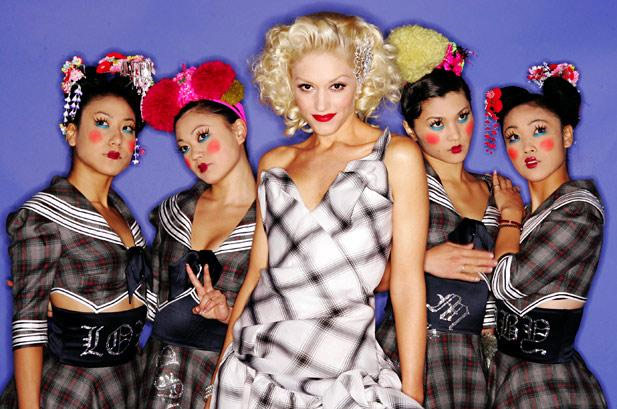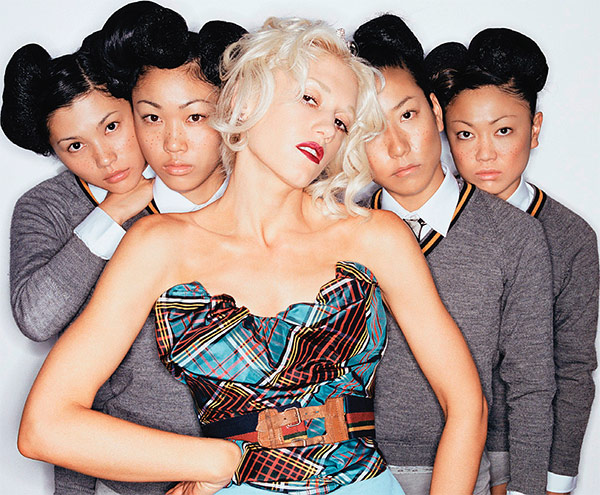
Lately, there’s been a lot of buzz around a Japanese phenomenon: the Harajuku girl. Unfortunately, for those awaiting her arrival, she isn’t coming. It isn’t that they refuse to share her with us, but simply that a Harajuku girl taken out of her natural habitat is just another fashionable girl. The neighbourhood is intrinsic in her allure. When on a plane bound for Japan, find your way into Tokyo, take a train on the Yamanote Line, hop off at the Harajuku Station next to Yoyogi Park, you could meet one of the hundreds of Harajuku girls in their natural habitat, walking the streets of one of the world’s hippest shopping districts.
Harajuku and Yoyogi Park were once home to the 1964 Tokyo Olympics. Since then, the area has morphed, and now hosts competitions of an entirely different kind. It is now the unofficial catwalk for the teen fashionistas of the city. It is where they go to show off their savvy sense of style to one another. Although no medals are given out, they try to impress and outdo each other, just like their athletic predecessors. In today’s Harajuku, originality and outlandishness are as good as gold.
But it hasn’t always been that way.
 Conformity has long been the name of the game in Japan, and nowhere is this more evident than in what people wear. It dates back to the times of Samurais and Geishas, when citizens were easily identified and classified into appropriate rank and social standing based on their apparel and this practice continues on. Japanese society is extremely regimented, and uniforms, both for work and school, allow people to be defined within that framework. Uniforms are embraced to such an extent that even those who aren’t required to wear them choose to do so. Many wear them during their leisure time, donning full hiking, skiing, golfing, or tennis ensembles, signaling to the world the activity they’ve chosen to participate in. From school kids, to businessmen, to construction workers, all have a set uniform.
Conformity has long been the name of the game in Japan, and nowhere is this more evident than in what people wear. It dates back to the times of Samurais and Geishas, when citizens were easily identified and classified into appropriate rank and social standing based on their apparel and this practice continues on. Japanese society is extremely regimented, and uniforms, both for work and school, allow people to be defined within that framework. Uniforms are embraced to such an extent that even those who aren’t required to wear them choose to do so. Many wear them during their leisure time, donning full hiking, skiing, golfing, or tennis ensembles, signaling to the world the activity they’ve chosen to participate in. From school kids, to businessmen, to construction workers, all have a set uniform.
But there’s an exception to every rule. It’s the teens and twentysomethings. Many take advantage of their youth to push the boundaries of conformity, knowing that it’s all-but-imminent with onset of adulthood and clad themselves in wildly unique garments as a means of self-expression. It’s as though every week is fashion week in Harajuku, as the hyper stylish youth strut up and down the streets showing off their latest looks. Some girls dress up as life-size dolls, complete with frilly petticoats, lacy knee socks, platform Mary Janes’, and hair done entirely in ringlets. Others adopt the 1970s London punk aesthetic, wearing studded belts, knee-high Doc Marten boots, and multi-coloured kilts to match multi-coloured hair. There is the occasional Western cowgirl wannabe in the crowd sporting a suede fringe skirt, a cowboy hat, and a holster with a plastic gun in it. Many of the girls wear plastic guns, toys, stuffed animals, or cell phones around their necks like pendants; sometimes, sporting them all at the same time. Inspiration for an outfit can come from colours or patterns, like a love of plaid, or even Tweety Bird. She will decide to wear it from head-to-toe, each item a different colour and size, even layering several skirts, shirts, or socks on top of each other. Each outfit is a manifestation of self-expression, reflecting the wearer’s mood on that particular day
While at first glance, it may appear as though the many stores and boutiques in the neighbourhood, especially along Takeshita-dori, are< starting the trends, but that’s not the case. Unlike Europe and North America, where famous designers set the standards every season, in Japan fashion is created on the street.
These days, there is another high profile imitator and admirer of the uber fashionable Harajuku girls: Gwen Stefani. Her new solo album Love. Angel. Music. Baby. is full of references to the girls, and seems to be an unabashed homage to them. There’s the eponymously named “Harajuku Girls,” featuring the lyrics “You’ve got that wicked style. I like the way that you are. I am your biggest fan.” She also refers to Harajuku as the place “where the catwalk got its claws.” In “Rich Girl” she acknowledges the girls by saying they “inspire me and come to my rescue.” Of late, it seems they not only inspire her, but also surround and adorn her as well.

Gwen Stefani photo courtesy of Universal Music
Written by Sara Kinninmont

Comments are closed.